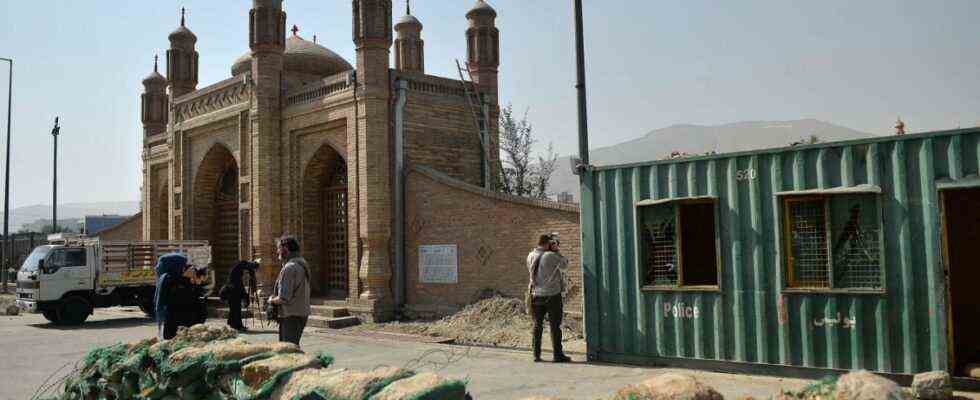After the devastating bomb attack on a mosque in Kabul, the Taliban have apparently started to take targeted action against possible sleeper cells of the so-called Islamic State (IS). According to agency reports, there were real skirmishes during raids in the north of the Afghan capital. After the shootings, some of which lasted hours, the Taliban spoke of their own successes: they had smashed a large cell of the “Islamic State in Khorasan” – that’s what a group of the IS terrorist group that only operates in Afghanistan – had killed, several militants were killed and others taken prisoner.
ISIS did not claim the serious attack on Sunday for itself. His culprit is obvious. IS has long been enemies with the also radical Islamic Taliban, although the ideological differences between the Islamists are not really great. In contrast to the Taliban, however, the Islamic State has very little support from the local population. Many foreign jihadists are said to be among the IS fighters, who are notorious for their brutality, which is particularly brutal by Afghan standards.
Several civilians died in the attack on the Eid Gah mosque in downtown Kabul, where a memorial service was being held for the mother of Taliban spokesman Sabihullah Mujahid. The exact number of victims was not disclosed. The attack in the middle of Kabul and against a memorial service of high Taliban representatives is a heavy blow for the new rulers. So far, the Taliban have been able to claim that the country has become safe again with their own takeover. The population is grateful to them for this and they therefore accept their rigid rule.
But the Afghan IS offshoot threatens this representation. ISIS had already carried out several attacks against the Taliban. For example, a bomb attack on Kabul airport during the evacuation by US troops; Back then, 13 US soldiers and numerous Afghans died in several explosions on the airport wall. Several attacks on Taliban convoys had also occurred in the Jalalabad region.
Former soldiers, police officers and secret service workers may have defected to IS for fear of the Taliban
The mosque attack in Kabul is particularly serious because it was one of the most important leaders of the militia. Sabihullah Mujahid is the most famous face of the Taliban. In contrast to ministers and other leaders, he appears regularly in public; he explains and justifies the group’s policies. He is also one of the few high-ranking Taliban to maintain official contact with the international media.
ISIS has been active in Afghanistan since 2015. He wants to establish a “province” of Khorasan in what is now Afghanistan; the name itself comes from the time of the Arab rule over Central Asia. In recent years, the Sunni IS has mainly attacked the Shiites in Afghanistan, who, as an Islamic minority sect, are heretics. However, he also attacked Western institutions and Taliban fighters, without showing any regard for civilians.
So far there have been no indications that supporters of President Ashraf Ghani’s government, which was overthrown by the Taliban in mid-August, may have committed the attack. It had already been speculated that former soldiers and officers of the defeated Afghan government army in August and the numerically very strong police force could now join the IS in Khorasan and thus significantly improve its combat strength.
Former Afghan soldiers, police officers and intelligence officials must particularly fear the Taliban. The new rulers consider most of the formerly uniformed people to be “traitors” because of their previous cooperation with the US and NATO troops. The Taliban have issued an “amnesty”. However, this does not seem to apply to high-ranking military and police representatives. The majority of the officers have therefore fled underground and could seek protection from IS.

